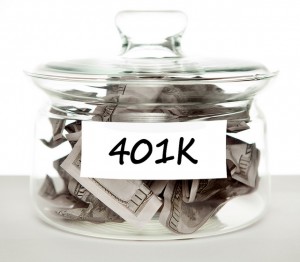 While there are many amazing benefits of working for yourself, there is one big pitfall compared to people who work for large companies: retirement plans. Small business owners don’t have 401(k) plan matching, but you do have some options to put away money in a tax advantage account. Find out more about the best self employed retirement plans.
While there are many amazing benefits of working for yourself, there is one big pitfall compared to people who work for large companies: retirement plans. Small business owners don’t have 401(k) plan matching, but you do have some options to put away money in a tax advantage account. Find out more about the best self employed retirement plans.
Table of Contents
Defined Contribution vs. Defined Benefit
In the old days, most big employers would offer defined benefit plans, most commonly in the form of a pension.
Employees did not have to worry about contributing. Everything was just taken care of. Pensions are quickly becoming a relic of a different era in retirement planning. Nowadays, most employers choose defined contribution plans.
A defined benefit plan means you are required to pay X amount per period while your employee, or you in the case you are the only employee, are in retirement. The plans below are all defined contribution plans, where the amount you save or contribute is defined up front and your business has no long-term requirement to pay.
SIMPLE IRA
A SIMPLE IRA Plan, Savings Incentive Match PLan for Employees, is like a 401(k) for small businesses. They are easy to start and take little work on the employer side. You can run a SIMPLE IRA for your employees including yourself and your spouse.
A SIMPLE IRA has a few options for funding, including a percent match between 1% and 3% or a non-elective contribution up to 2%. The maximum contribution from the employee is $12,000 per year in 2013, though there are some exceptions for people 50 and older. There are also some aggregate limits if you have other retirement accounts.
The IRS provides all of the details for how the plans work and how to start one at the SIMPLE IRA plan page.
SEP
An SEP, or Simplified Employee Pension, is similar to a SIMPLE IRA, except the contributions do not have to be fixed to a pay period.
In a SIMPLE IRA, the employer match must be made within 30 days of payday. Assuming a regular pay schedule, as an employer you have to ensure you have the cash on hand to deliver. That includes deposits for your own contributions.
With an SEP, you just have to make the contributions whenever you want up to 25% of the employee’s annual pay. This plan does not allow for employee contributions.
Because of the flexibility of this type of plan, it is the easiest for most small business owners to maintain to contribute to their own retirement from their business earnings.
You can learn more about running an SEP plan from the IRS website.
401(k)
As a business, you are able to establish a 401(k) plan for yourself and any other employees. A 401(k) works similarly to a SIMPLE IRA for most businesses.
401(k) plans have more regulations than SIMPLE IRAs, so they are generally not preferred for small businesses with employees. However, if you are the only employee, or if the only employees are you and your spouse, you can open a solo 401(k) plan that has fewer rules.
With a solo 401(k), you can contribute up to $17,000 per year, plus up to 25% of your net business income with a limit of $50,000 per year. That is a huge tax benefit if you choose either the Roth (taxed up front) or traditional (taxes upon retirement) plan.
The IRS provides the formulas to calculate your eligible contributions into a 401(k) plan for the self-employed.
Other Options
While the most common options are outlined above, you can also check out the plans below:
A profit-sharing plan is flexible and allows you to decide what to contribute annually up to 25% of your compensation with a $51,00 limit in 2013.
Money purchase plans require a fixed percentage contribution up to 25% of your annual compensation according to a pre-determined formula.
Do you have a self-employed retirement plan?




[…] @ Entrepreneurship Life writes Retirement Planning for Self-Employed Entrepreneurs – While there are many amazing benefits of working for yourself, there is one big pitfall […]